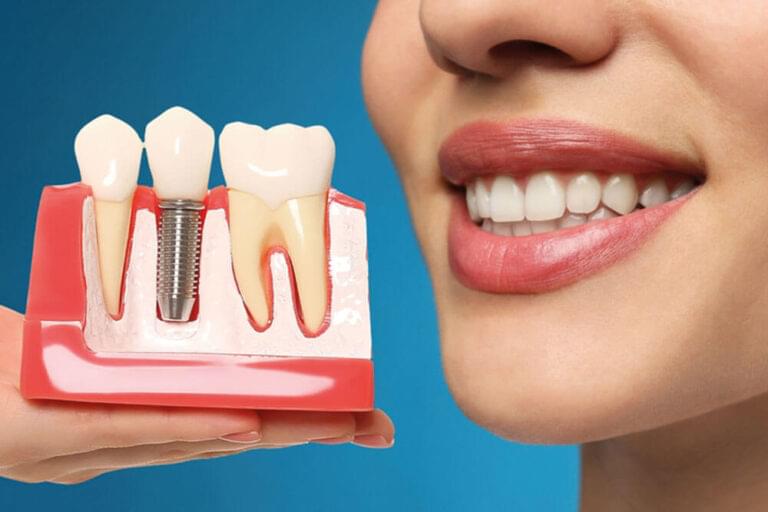If you’re at the beginning stages of researching options for restoring your teeth, you’ve likely come across terms like dental arches, bridges, crowns, and All-on-X implants. Each of these plays a crucial role in restoring dental health, but understanding their differences can be overwhelming. For those aged 65+ dealing with trouble eating, worries about cost, or concerns about maintaining health, the decision becomes even more complex—especially if you still have teeth that look good and want to avoid dentures.
Let’s dive into the key differences between these dental treatments and help you make an informed choice that suits your needs.
What Is a Dental Arch?
When people talk about a ‘dental arch’ they usually refer to a full row of teeth, either on top (maxillary arch) or bottom (mandibular arch) of your mouth. These arches can be restored in several ways, from dentures to more permanent options like implants. When all teeth are present, the arch is complete. However, as you lose teeth, the arch becomes incomplete, affecting how you chew, speak, and smile.
What it’s used for:
Dental arches come into play when discussing full-mouth restorations. Whether you are missing a few or most of your teeth, restoring the dental arch is crucial for regaining functionality.
Who it’s good for:
If you’re missing several teeth and are struggling to eat or feel self-conscious about the appearance of missing teeth, restoring the entire arch can help rebuild your bite, reduce discomfort while eating, and enhance your appearance.
Dental Bridges: Filling the Gaps
A dental implant bridge is a prosthetic to fill the gap left by one or more missing teeth. It’s often supported by crowns placed on healthy adjacent teeth, with a false tooth in the middle to complete the bridge. This approach provides a natural look and restores function, especially for chewing.
When comparing a dental bridge vs an implant, a bridge is often less expensive upfront but may require more maintenance down the line. Implants, however, offer a more permanent solution since they integrate into the jawbone. A dental implant bridge combines implants and bridges to restore multiple teeth, providing a stable and long-lasting result.
Who it’s good for:
If you’ve lost one or a few teeth but still have strong adjacent teeth, a bridge could be an ideal solution. For someone who is still concerned about cost but wants a more secure solution, a dental implant bridge is worth considering.
Pros and Cons:
- Pros: More affordable than individual implants, can restore functionality and appearance.
- Cons: Requires altering adjacent teeth for support, which may compromise their long-term health.
Crowns: Protecting and Restoring Individual Teeth
A dental crown is like a cap that fits over a damaged or decayed tooth to restore its shape, size, and function. Crowns are often used to strengthen teeth after procedures like root canals or large fillings, and a dental implant crown can also be placed on top of dental implants to replace a missing tooth.
If one of your front teeth is damaged, a dental crown for a front tooth is designed to blend in seamlessly with your natural teeth, preserving your smile and giving you back your confidence. Crowns for front teeth are crafted with aesthetics in mind, ensuring they match your surrounding teeth in color and shape.
Who it’s good for:
Crowns are a durable, long-lasting solution if you have a damaged but salvageable tooth or want a more permanent replacement for a missing tooth.
Pros and Cons:
- Pros: Long-lasting, preserves natural tooth structure (if used on a real tooth).
- Cons: More expensive than fillings or basic treatments, especially if multiple crowns are needed.
All-on-x Dental Implants: A Complete Smile Restoration
For those missing most or all of their teeth in one or both arches, All-on-x (also known as all-on-4) dental implants offer a comprehensive, permanent solution. This procedure involves strategically placing four (or more) dental implants into the jawbone to support an entire arch of teeth, either on the upper or lower jaw.
What is All-on-x dental implants exactly? Unlike traditional dentures, which rest on your gums and need to be removed for cleaning, All-on-x dental implants provide a fixed, stable set of teeth. The four implants act as anchors for the new teeth, creating a permanent, natural-looking smile that won’t slip or move.
Who it’s good for:
If you dislike the idea of dentures and want a long-term, natural-feeling alternative, All-on-4 dental implants could be the perfect fit. They’re especially helpful for those who have lost most of their teeth but don’t want the hassle and discomfort associated with removable dentures.
Pros and Cons:
- Pros: Permanent, secure, and natural-looking. They also prevent bone loss in the jaw, which can happen when teeth are missing.
- Cons: Higher initial cost compared to other treatments, though the long-term savings in maintenance can make it more affordable over time.
Which Option Is Best for You?
Choosing the right solution depends on several factors, including how many teeth you’re missing, your budget, and your overall health goals. Here’s a quick breakdown:
- For Missing One or a Few Teeth:
Consider a dental bridge or dental implant crown if you want to restore the gap left by one or two teeth. Bridges are often more affordable upfront, while implants offer more stability in the long run. - For Protecting Damaged Teeth:
A dental crown front tooth is perfect for anyone looking to protect a weakened tooth while maintaining a natural smile. - For Full Arch Replacement:
If you’re missing an entire dental arch and want to avoid dentures, All-on-4 dental implants provide a permanent and natural-feeling solution. While the initial cost is higher, they offer long-lasting benefits, both aesthetically and functionally.
Considering the Costs
For those aged 65+, concerns about cost are often top of mind. While the initial price of procedures like All-on-4 dental implants or dental implant bridge solutions may seem high, it’s important to think about long-term savings. Dentures, though cheaper at first, often require replacement and maintenance and can lead to additional problems like bone loss, making the upfront investment in implants worthwhile for many.
Health Perspective:
From a health perspective, maintaining your ability to chew properly is crucial to digestion and overall well-being. Implants and crowns help preserve your jawbone, which in turn keeps your face looking youthful and your dental health strong.
Final Thoughts
Whether you’re still in the early stages of research or starting to narrow down your options, it’s important to consult with a dentist about what’s right for your specific situation. With modern advancements in dentistry, you no longer have to rely on dentures. Options like dental arches, bridges, crowns, and All-on-X implants provide durable, aesthetically pleasing alternatives that can restore your smile and confidence.
While the road to choosing the best solution might seem daunting, understanding these treatments is the first step toward regaining comfort and a natural smile that suits your health needs.










